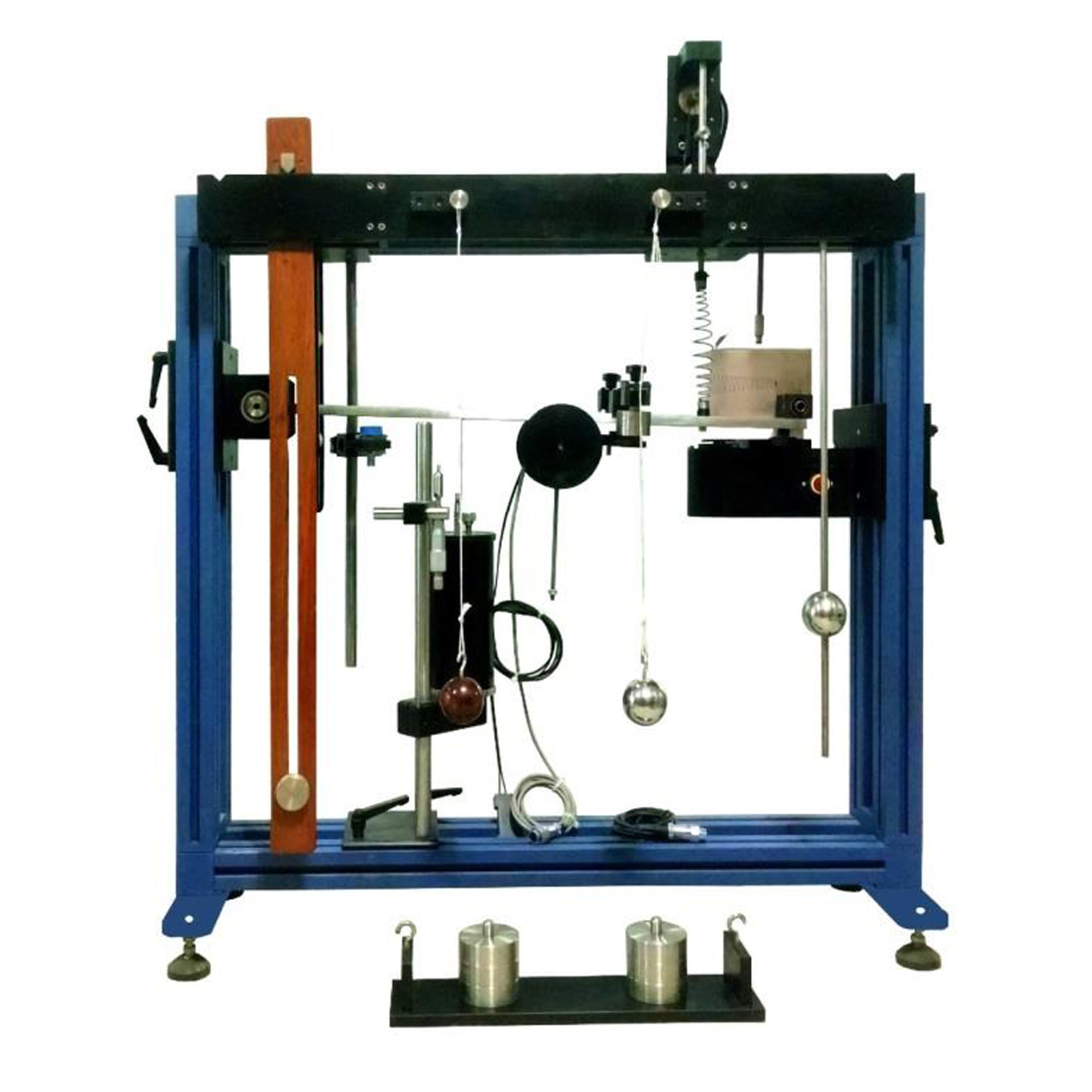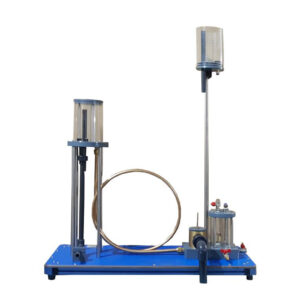The trainer covers a wide range of topics in mechanical vibration technology. It is mounted on a sturdy, low-vibration frame. Quick fastening elements for the formed grooves for quick and accurate experimental set-up. The apparatus is consisting of different sections which are concern with vibrations study.
- Different Type of Pendulums Study
- Spring Mass Vibrations
- Rigid Beam Vibration free & forced as well as damped & un-damped
- Flexible Beam Vibrations
- Rigid beam vibration free and forced with unbalance excitation.
The apparatus has installed with the different pendulums including 6 pendulums of different sizes and materials like steel ball small diameter, steel ball large diameter, wood ball large diameter, compound pendulum, compound wood pendulum and bifilar pendulum (optional). In the spring mass vibration section of this apparatus user can study hooks law, a free hanged spring vibrations study as well as with different mass can be change to study the behavior of the spring mass system can study (optional). In the beam vibrations forced vibration is generated with an electrical motor-driven imbalance exciter. There are two type of exciter in this apparatus one is Linear exciter with Servo motor & driver and the other is DC rotary exciter. The exciter frequency can be set precisely on a control unit with digital display. An adjustable oil damper is used as vibration absorber. A mechanical drum and a polar diagram recorder (optional), records the vibration. All the parts of the apparatus are stored in a storage tray supplied with the equipment. The optional sensor enables to measure electrically the amplitudes of various oscillators. Alternatively, measured values can be evaluated with the software for data acquisition if Data Acquisition Based System is selected (optional).




